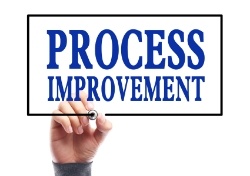
If you can't answer to this question with clarity, you probably need to look at ways to improve productivity procedures. These are the routines that drive your business from product conception and development all the way to delivering the end product to the marketplace and measuring consumer feedback.
Only by optimising each of these procedures and creating a system and workflow that taps into the power of synergy can you achieve your full potential, beat your competitors, and maximise your bottom line.
Knowledge is Key
Given the complexity and hyper-competitiveness of the modern manufacturing environment, any attempt to improve productivity procedures depends on gaining the kind of actionable knowledge that drives business efficiency. And that hinges on having the right Enterprise Resource Planning (ERP) System.
Implementing an ERP system typically both delivers a strategic advantage and leads to considerable lowering of costs for inventory, manufacturing operations and administration.
Improving productivity procedures depends on having timely and accurate information about a broad array of core processes within the company. Specifically, management needs to focus on a group of key performance indicators (KPIs) in order to analyse, assess and monitor business processes.
Key Performance Indicators
KPIs can take numerous forms depending on the type of organisation. Though many will be standard for any manufacturing enterprise, some will be specific to your own operation. For this reason, considerable care is needed when choosing the right KPIs to monitor on a regular basis. It's important that these are determined as part of the ERP development process.
Important manufacturing metrics include cycle time - the measure of the amount of time it takes to complete one production cycle from start to finish, unit costs, yield, asset and capacity utilisation, throughput, and cost volume profit analysis which is a form of enhanced break even analysis.
Another key productivity metric, especially for firms pursuing lean manufacturing, involves inventory management. High inventory velocity is a key goal of most businesses, so metrics such as WIP inventory/turns is the kind of data that will help facilitate this.
Relevant KPIs for the marketing department would include new customer acquisition and attrition, and the turnover and profitability of various market and demographic segments.
Establishing the right KPIs is vital for the kind of continuous productivity improvement you need in today's competitive marketplace. It's also crucial to keep staff appraised of their performance and to what extent they're meeting clearly defined goals.
Strategy, Goals and Priorities
KPIs have to be determined as part of an overall strategy for the firm and its manufacturing objectives. It's a key component of establishing the ERP software system that the firm's decision makers will use to formulate policy and monitor the direction and performance of the company.
Once strategy and goals are established, it's time to determine the relevant data needs that will allow management to achieve those objectives. This will define the overall scope of information requirements and then the actual format of the KPIs.
The choice of key metrics also depends on a firm's priorities - whether it wishes to focus on product quality, delivery time, or cost efficiency, for example.
Once the system is up and running, ERP systems can be programmed to deliver tailored KPIs to the right parties. Various stakeholders, decision makers and job roles can thus receive customised reports comprising just the data they need to take fast action and avoid overwhelm. Only through access to such timely, focused and relevant data can a firm hope to effectively improve productivity procedures.



.png?width=120&height=120&name=MicrosoftTeams-image%20(4).png)


